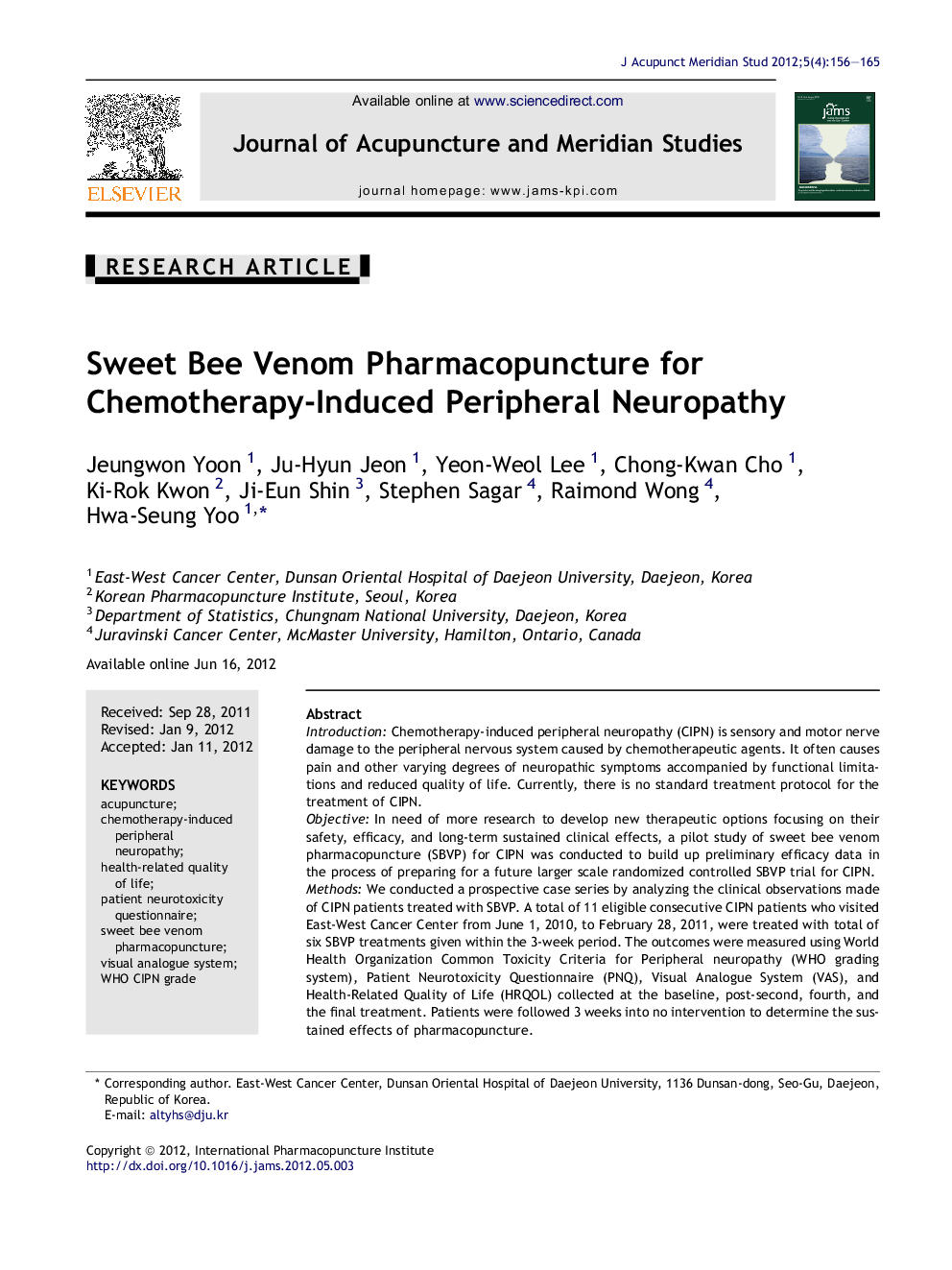| Article ID | Journal | Published Year | Pages | File Type |
|---|---|---|---|---|
| 3099010 | Journal of Acupuncture and Meridian Studies | 2012 | 10 Pages |
IntroductionChemotherapy-induced peripheral neuropathy (CIPN) is sensory and motor nerve damage to the peripheral nervous system caused by chemotherapeutic agents. It often causes pain and other varying degrees of neuropathic symptoms accompanied by functional limitations and reduced quality of life. Currently, there is no standard treatment protocol for the treatment of CIPN.ObjectiveIn need of more research to develop new therapeutic options focusing on their safety, efficacy, and long-term sustained clinical effects, a pilot study of sweet bee venom pharmacopuncture (SBVP) for CIPN was conducted to build up preliminary efficacy data in the process of preparing for a future larger scale randomized controlled SBVP trial for CIPN.MethodsWe conducted a prospective case series by analyzing the clinical observations made of CIPN patients treated with SBVP. A total of 11 eligible consecutive CIPN patients who visited East-West Cancer Center from June 1, 2010, to February 28, 2011, were treated with total of six SBVP treatments given within the 3-week period. The outcomes were measured using World Health Organization Common Toxicity Criteria for Peripheral neuropathy (WHO grading system), Patient Neurotoxicity Questionnaire (PNQ), Visual Analogue System (VAS), and Health-Related Quality of Life (HRQOL) collected at the baseline, post-second, fourth, and the final treatment. Patients were followed 3 weeks into no intervention to determine the sustained effects of pharmacopuncture.ResultsBoth of the WHO CIPN grade and PNQ scores have shown a decrease in the level of neuropathy. VAS pain level has also shown a great decrease and improvement in patients' quality of life have also been detected though modest. Changes in WHO grade, VAS and Total HRQOL scores between the baseline and after the last treatment session were significant. Changes in WHO grade, Total PNQ, PNQ-sensory, VAS, Total HRQOL, and HRQOL-functional scores between the baseline and the 3-week follow-up were significant.ConclusionThe positive result of the study supports the potential value of conducting a fully powered trial to explore further efficacy of SBVP for CIPN. However a single positive result within this pilot study must be interpreted with caution.
